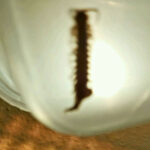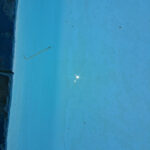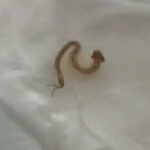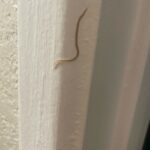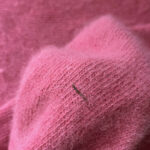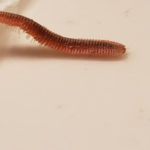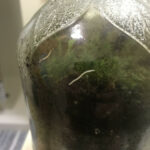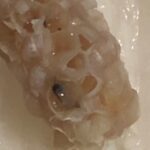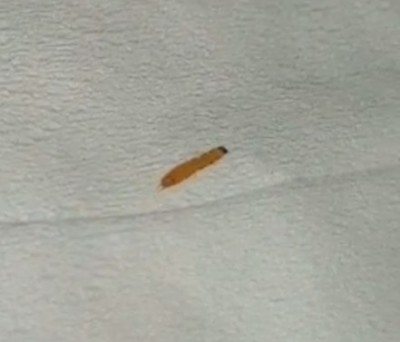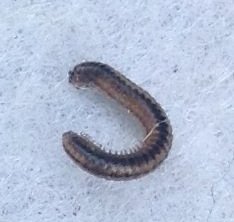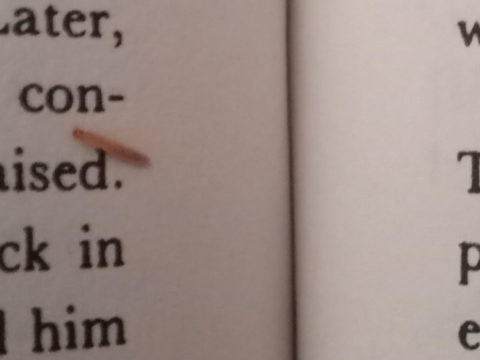
“I found this worm (?) in my laundry, which was close to the entrance of the bathroom”, writes Lindsey in her submission regarding the worm-like creature with antennae pictured below. “I’ve looked up drain worms but this seems to be closer to a centipede?” Right off the bat, Lindsey has correctly identified the organism. She is also correct in looking up drain worms (AKA drain fly larvae, or moth fly larvae), as those are the most common worm-like organisms one finds in laundry rooms and bathrooms. Centipedes are not as commonly found in laundry rooms or bathrooms specifically, but they can be found all over the home, so it is not improbable that one would be in these areas.
Centipedes are predators. They hunt small creatures like mites, moths, flies, and other critters that typically invade homes. For that reason, people do find centipedes in their homes fairly often. But this is not because the centipedes want to infest the home and are pests of any kind, but because there are already bugs inside the home that the centipede is praying on. So, when you look at it that way, the centipede is actually doing Lindsey a favor, as it is cleaning out her home of other bugs, much like a spider would. The difference between a centipede and a spider is that a centipede doesn’t leave behind any webs that Lindsey would then have to clean up. Of course, there are other differences too, like the fact that spiders have eight legs, while centipedes have dozens. They also belong to entirely different phylums: centipedes being arthropods and spiders being arachnids.
With all of that said, we still, of course, completely understand that people do not want centipedes roaming their house. The best thing Lindsey can do is clean her home, and look for any nests of other bugs that the centipede might be hunting. Since she found this centipede in the laundry, it is possible she is dealing with clothes-eating pests like clothes moth larvae or carpet beetle larvae, and the centipede was hunting these critters. She will want to check all the areas she keeps clothes, and clean those areas out too. Of course, she will also want to move the centipede outside. We recommend scooping it onto a dustpan while avoiding direct physical contact, because centipedes can sting you and inject you with venom. This venom is not lethal or really dangerous to any significant degree, but it can cause an allergic reaction which can result in pain, rashing, or general irritation of the skin.
In conclusion, Lindsey found a centipede in her laundry room. They are not dangerous per se, but they can sting you, so we recommend not touching it. We hope this helps, and we wish Lindsey the very best!
All About Worms is always free, always reader-supported. Your tips via CashApp, Venmo, or Paypal are appreciated! Receipts will come from ISIPP Publishing.
You might also find these guys interesting!




